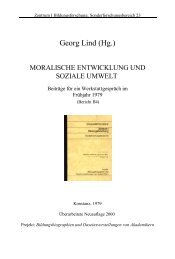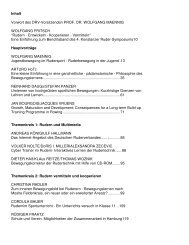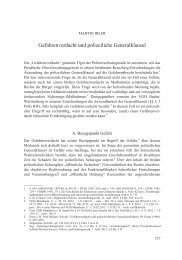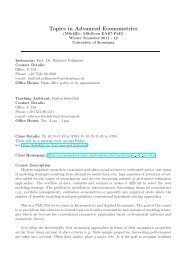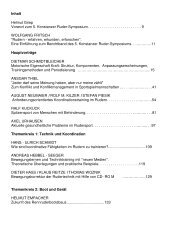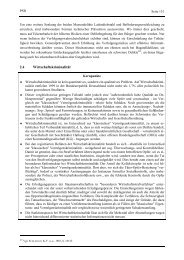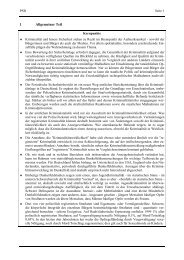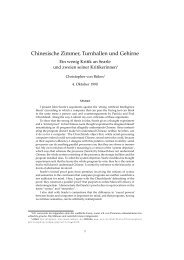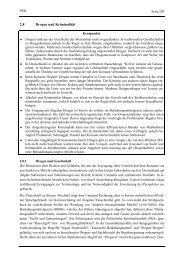Subjects and non-subjects in constructions
Subjects and non-subjects in constructions
Subjects and non-subjects in constructions
You also want an ePaper? Increase the reach of your titles
YUMPU automatically turns print PDFs into web optimized ePapers that Google loves.
24<br />
the men‟ <strong>in</strong>stead of „these‟ as <strong>in</strong> the <strong>in</strong>f<strong>in</strong>itive clauses before. Note also the<br />
punctuation (that is org<strong>in</strong>al). These <strong>in</strong>dications suggest a certa<strong>in</strong> degree of<br />
emancipation of the AcI construction from its matrix predicate <strong>and</strong> change <strong>in</strong>to<br />
a reportative mood. Even though Greek has not conventionalized <strong>and</strong><br />
grammaticalized this use as a reportative mood, example (20) still shows that<br />
the potential for a full emancipation of the AcI has existed. This is a less<br />
frequently discussed subtype of <strong>in</strong>subord<strong>in</strong>ation, which is a process widely<br />
attested cross-l<strong>in</strong>guistically whereby an orig<strong>in</strong>al subord<strong>in</strong>ate clause is<br />
re<strong>in</strong>terpreted as a ma<strong>in</strong> clause reta<strong>in</strong><strong>in</strong>g <strong>and</strong> conventionaliz<strong>in</strong>g the concept of<br />
the former ma<strong>in</strong> clause (see Evans 2007 for an extensive typological<br />
overview). Such a development is also attested <strong>in</strong> Classical Lat<strong>in</strong> even to a<br />
higher degree. In this language, the AcI can emancipate <strong>and</strong> be used without a<br />
matrix predicate that is then only conceptually (as with the G-NTCs) implied.<br />
As such, the exclamatory use of sīc<strong>in</strong>e „thus (negatively)‟ is often used with the<br />
AcI (Lewis & Short, sub verbo), cf. (21) from Plautus Pers. 45:<br />
(21) sīc<strong>in</strong>e hoc tē mihī facere (Lat<strong>in</strong>)<br />
thus this:ACC(=NOM) you:ACC I:DAT do:INF<br />
„[Ought you] to be treat<strong>in</strong>g me <strong>in</strong> this fashion?‟<br />
In the construction sīc<strong>in</strong>e + AcI, a modal event denot<strong>in</strong>g necessity <strong>in</strong> very<br />
general terms, i.e. only conceptually, is implied. Thus the orig<strong>in</strong>al S-NTC form<br />
becomes a G-NTC here, represent<strong>in</strong>g another <strong>in</strong>stance of <strong>in</strong>subord<strong>in</strong>ation. The<br />
loss of the antecedent clause might be discursively motivated. As Langacker<br />
(2008: 418) po<strong>in</strong>ts out, the real news is often the consequent event while the<br />
antecedent event only <strong>in</strong>troduces <strong>and</strong> frames it.<br />
Crucially, noth<strong>in</strong>g happens to the very consequent event dur<strong>in</strong>g this<br />
change: it rema<strong>in</strong>s the same throughout the development. The changes only<br />
affect the set of <strong>in</strong>formation regard<strong>in</strong>g the antecedent event that must be<br />
m<strong>in</strong>imally present at a particular utterance: orig<strong>in</strong>ally, the antecedent event<br />
must have been specified, but <strong>in</strong> examples such as (21), only its concept is<br />
provided.<br />
5. Conclusions<br />
To summarize the ma<strong>in</strong> conclusions, I have first put forward a<br />
categorization of the NTCs <strong>in</strong>to lexeme-, gram- <strong>and</strong> syntax-driven NTCs<br />
accord<strong>in</strong>g to the source of the entailments on the trajector-like argument that<br />
lead to the assignment of an oblique case to that argument. I emphasize that<br />
this disivion is an approximation gloss<strong>in</strong>g over more specific subtypes (like the<br />
genitive-under-negation construction which respresents a special subtype of G-<br />
NTC comb<strong>in</strong>ed with the type referrd to as “reference-related conditions” <strong>in</strong><br />
Haspelmath 2001:56).



